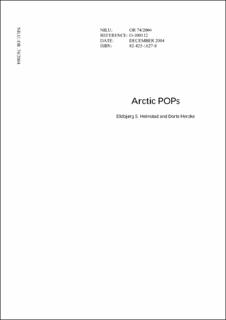| dc.description.abstract | Results from a four year (2001-2004) project reveal that brominated flame retardants such as polybrominateddiphenyl ethers are present in fish all over Arctic with a tendency of higher levels in European Arctic compared to American Arctic (Alaska and Canada). This science based learning educational project involved 15 GLOBE schools from 7 countries in Arctic; Alaska, Canada, Finland, Iceland, Norway, Russia and Sweden. Based on awritten “hands-on” fish protocol made by NILU, the involved school sampled two or three parallels during fall2001, spring 2001, fall 2002 and fall 2003. NILU analysed two samples for each school each sampling period, a total of 47 samples of Atlantic cod, Pacific cod and haddock livers, 14 samples burbot liver, 5 samples of whitefish liver, 6 whitefish fillets, and 18 samples of Arctic char, Atlantic and Pacific salmon and Brown trout fillets. Reported data of PCB153, BDE47 and BDE99 are given with a comparison to other international data. Appendix with sampling protocol and additional useful Internet links for different themes such as transport and effects of POPs, food advisories, fish species and sampling is attached. | |
